
NGC 2787 is a barred lenticular galaxy approximately 24 million light-years away in the northern constellation of Ursa Major. It was discovered on December 3, 1788 by German-born astronomer William Herschel. J. L. E. Dreyer described it as, "bright, pretty large, a little extended 90°, much brighter middle, mottled but not resolved, very small (faint) star involved to the southeast". The visible galaxy has an angular size of 2.5 × 1.5 arcminutes or 3.24 × 1.81 arcminutes and an apparent visual magnitude of 11.8.

NGC 4526 is a lenticular galaxy with an embedded dusty disc, located approximately 55 million light-years from the Solar System in the Virgo constellation and discovered on 13 April 1784 by William Herschel. Herschel observed it again on 28 December 1785, resulting in the galaxy being entered twice into the New General Catalogue.

NGC 5613 is a lenticular galaxy in the constellation Boötes. It is part of the Arp 178 set of interacting galaxies, with NGC 5615 and NGC 5614.

NGC 5890 is an unbarred lenticular galaxy in the constellation Libra. It was discovered in April 1785 by Ormond Stone.
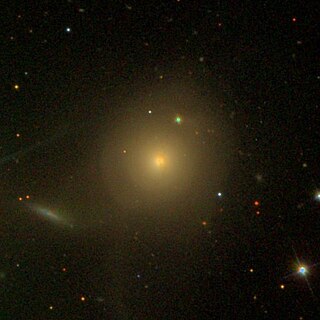
NGC 467 is an unbarred lenticular galaxy in the constellation Pisces. It was discovered on 8 October 1785 by William Herschel.
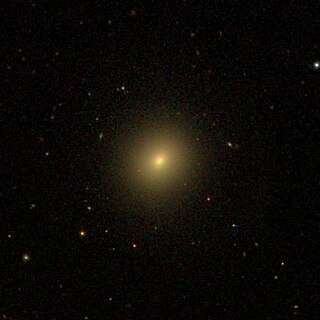
NGC 113 is an unbarred lenticular galaxy located in the constellation Cetus. It was discovered by German astronomer, Ernst Wilhelm Leberecht Tempel, on August 27, 1876.

NGC 125 is a lenticular galaxy located in the constellation Pisces. It is designated as subclass Sa Ring in the galaxy morphological classification scheme. It lies approximately 235 million light-years away.

NGC 1326 is a lenticular galaxy in the constellation Fornax, 63 million light-years away. It was discovered by English astronomer John Herschel on 29 November 1837. It is a member of the Fornax Cluster, an NGC 1316 subgroup and has a diameter of 70 000 light-years.
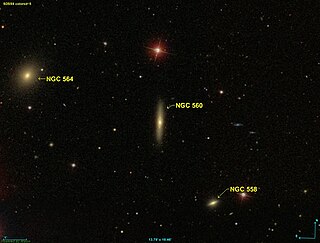
NGC 560 is a lenticular galaxy in the constellation Cetus. It is estimated to be about 250 million light-years from the Milky Way and has a diameter of approximately 150,000 light years. It is part of the Abell 194 galaxy cluster. NGC 560 was discovered on October 1, 1785 by the German-British astronomer William Herschel.

NGC 670 is a lenticular galaxy located in the Triangulum constellation about 165 million light years from the Milky Way. It was discovered by the German-British astronomer William Herschel in 1786.

NGC 850 is a lenticular galaxy in the constellation Cetus. It is estimated to be 300 million light-years from the Milky Way and has a diameter of approximately 130,000 ly.

NGC 890 is a lenticular galaxy in the constellation Triangulum. It is estimated to be 180 million light-years from the Milky Way and has a diameter of approximately 130,000 ly. NGC 890 was discovered on September 13, 1784 by Wilhelm Herschel.

NGC 790 is a lenticular galaxy in the constellation Cetus. It is estimated to be 233 million light-years from the Milky Way and has a diameter of approximately 90,000 light years. NGC 790 was discovered on September 10, 1785 by the German-British astronomer William Herschel.

NGC 812 is a spiral galaxy located in the Andromeda constellation, an estimated 175 million light-years from the Milky Way. NGC 812 was discovered on December 11, 1876 by astronomer Édouard Stephan.

NGC 813 is a lenticular galaxy in the constellation Hydrus. It is estimated to be 390 million light-years from the Milky Way and has a diameter of approximately 140,000 ly. NGC 813 was discovered on November 24, 1834, by the British astronomer John Herschel.

NGC 804 is a lenticular galaxy located in the Triangulum constellation about 231 million light-years from the Milky Way. It was discovered by the American astronomer Lewis Swift in 1885. This galaxy was also observed by the French astronomer Guillaume Bigourdan on December 24, 1897, and it has been added to the Index Catalogue under the symbol IC 1773.

NGC 939 is a lenticular or elliptical galaxy in the constellation Eridanus. It is estimated to be 241 million light-years from the Milky Way and has a diameter of approximately 80,000 ly. NGC 939 was discovered on October 18, 1835 by astronomer John Herschel.

NGC 656 is a barred lenticular galaxy located in the Pisces constellation about 175 million light-years from the Milky Way. It was discovered by the Prussian astronomer Heinrich d'Arrest in 1865.
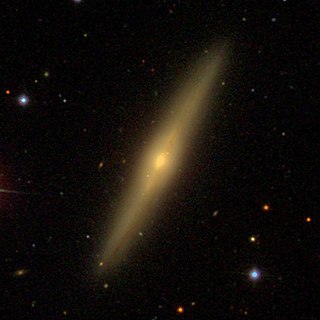
NGC 5422 is a lenticular galaxy located in the constellation Ursa Major. It was discovered on April 14, 1789, by the astronomer William Herschel.
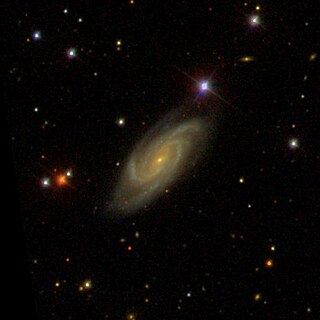
NGC 551 is a spiral galaxy in the constellation Andromeda. It is estimated to be about 205 million light-years from the Milky Way. The object was discovered on 21, September 1786 by the German-British astronomer William Herschel.




















